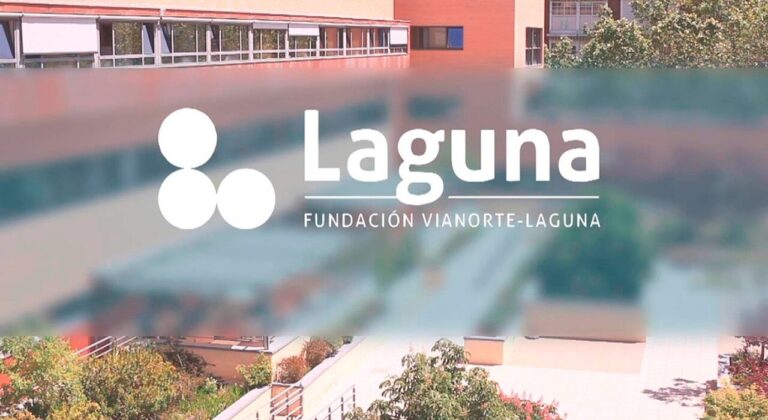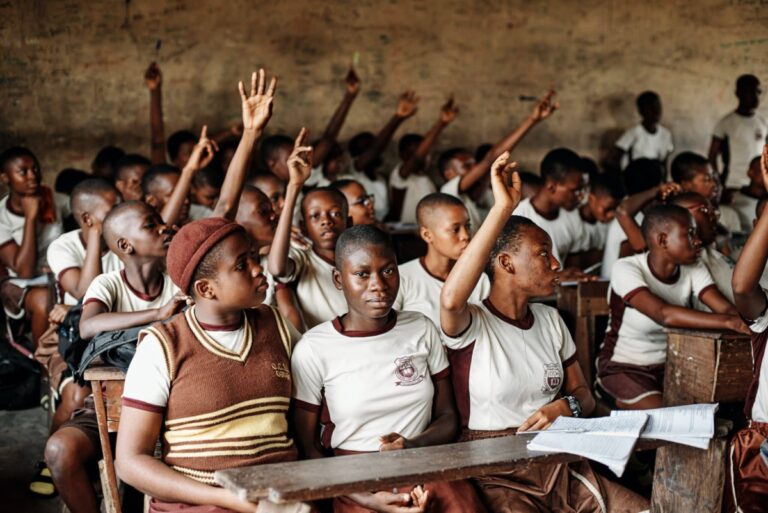In recent decades, developing countries have succeeded in getting many more boys and girls enrolled in school. However, this quantitative increase has been accompanied by a decrease in the quality of teaching. Improving this aspect is more difficult, because it collides with a number of the chronic problems of these educational systems. Several reports propose solutions and examples of best practices.
A few months ago The Economist shed light on a study published in February 2022 that showed how the reading skills of students from poor regions had been deteriorating in recent decades. The authors, two researchers from the American think tank Center for Global Development, relied on data from UNICEF long-standing reading comprehension tests in 87 developing countries.
Specifically, these tests evaluated the reading ability of different groups of people born between 1955 and 1995 who had spent a maximum of five years in primary school. With the data, the researchers were able to verify the decline in reading skills from schooling during this time.
More children in schools, but more failing reading exams

Certainly, the number of people who have received minimal reading instruction has increased, because school enrollment has also increased. For example, in Southern Asia, the percentage of girls born in the 1990s with at least five years of schooling is 76%, while it was less than 35% among those born in the 1960s. Something similar has occurred in sub-Saharan Africa, at 66% and 41%, respectively.
However, the quality of instruction appears to have declined. According to the report, at least three in ten people who have completed or nearly completed primary school are unable to understand a simple sentence at first glance, a proportion that has increased over time.
In most of the countries studied, the positive impact of schooling on reading comprehension has diminished over time
Specifically, this indicator has worsened in 56 of the 87 countries analyzed in the study, has improved in 14, and has remained more or less the same in the rest. There are important differences by region: while quality has been maintained in the Middle East, North Africa and Latin America as enrollment has increased –especially in the first two– in South Asia and Sub-Saharan Africa the percentage of solvent readers (those who attended at least five years of school) has plummeted. For example, in India or Ethiopia it has gone from almost 100% in the cohort born in the 1960s to 40% of those born in the 1990s.
Education with feet of clay
The sharp increase in enrollment in the 1990s and 2000s seems to have had an influence, which on the other hand is logical: when socio-culturally disadvantaged students, who were previously left out, enter the classroom, the average reading comprehension decreases. However, this factor by no means explains the whole story, since the downward trend had started earlier, in addition to the fact that it has never occurred in a few countries where the number of students has also grown.
The truth is that education in developing countries always stands on fragile ground. In addition to the absence of schools or the infrastructure to reach them, something that has gradually improved, other chronic problems must be taken into account: a financing system that is unstable to say the least and almost always insufficient; the shortage of teachers, or the lack of motivation of many due to low salaries (which sometimes leads them to look for supplemental private classes); lack of experience in managing schools and school districts; a labor market that does not demand specially qualified labor, which diminishes the added value of formal education. Not to mention other factors external to the school, but which also affect the school systems: wars, catastrophes, child malnutrition, child labor, ethnic marginalization or political instability.
Transparency and accountability
Various reports that have analyzed the educational crisis in third-world countries agree on the diagnosis: once the largest possible number of children are enrolled (quantitative policies), greater transparency when it comes to results and finances is key for improving the quality of instruction, teacher training and motivation.
This is pointed out, although with different nuances, by studies published by various international institutions (one from the World Bank in 2018, another from the International Initiative for Impact Evaluation in 2013) and by private researchers (“The Politics of Education in Developing Countries: from Schooling to Learning,” Oxford Academic, 2019, or “What works to improve the quality of student learning in developing countries?,” International Journal of Education Development, 2016).
Various reports point to the need to improve teacher accountability and motivation
Regarding transparency, all the studies stress the need for educational authorities to make their decisions based on results; and that these, duly contextualized, must also be made known to society, especially families, so that they can hold their schools accountable.
The World Bank report gives several examples of good practice in this field. In Pakistan, the decision by several state governments to inform parents about the educational merits of different schools led to increased competition in both the public and private sectors, which improved performance in both and contributed to lowering private school tuitions.
The report also mentions Brazil, an emerging country that can serve as a model for other developing countries. There, the government passed a national exam in 1995, which was later extended to all 4th and 8th grade students. The information obtained from it was used to develop an educational quality index (IDEB, Indice de Desenvolvimento da Educação Básica) for each school, municipality and region. This is published every two years and is used by political authorities and families to put pressure on their educational centers.
Transparency and accountability in financial matters is also important. For example, in the mid-1990s, schools in Uganda only received a quarter of the public funds theoretically set aside for them. When the government began to make public the terms and amounts of disbursements, a series of “cracks” emerged showing where the money had actually gone ( to local intermediaries). Another possible measure is for countries that donate development aid to require test results of the funds´ recipients. This is the case, for example, with one U.K. foundation where the amount of aid it disburses depends directly on the number of students which pass the national secondary school exams.
Politics and “pre-politics”
The study published in Oxford Academic focuses on how the power dynamics between stakeholders in education – politicians, teachers, parents – affect its quality anywhere, but more so in poor regions. For example, the authors point out, in developing countries the amount of pressure teachers´ unions or associations can exert is usually much greater than that of families, placing teachers in an advantageous position that has often allowed them to block reforms aimed at intensifying accountability of their work.
On the other hand, the authors of the article add, in these countries it is frequent that, in parallel to the “official” authorities, there are informal patronage-esque “pre-political” networks, strongly rooted in the local territory, which condition the scope of the reforms. In developing regions, personalist and populist regimes are also frequent. Sometimes, the proximity of an election serves as an incentive to launch educational initiatives, but which are usually more focused on quantitative variables (more funding, more teachers, more schools), than on qualitative ones, which don’t produce short-term returns and therefore win fewer votes.
Salary bonuses
The studies cited agree that to improve the quality of education it is necessary to prepare and motivate teachers properly. One way to do this, which in turn results in greater accountability, is to establish salary incentives based on student performance. The report uses as a model a policy carried out in an OECD country: Chile’s National Performance Evaluation System. When it launched in 1996, it offered a public funding bonus to schools that improved their results. The award then went to individual teachers, for which a rigorous evaluation program was devised. According to different investigations, the consolidation of this project has been key in increasing the reading results of Chilean students on the Programme for International Student Assessment (PISA) test.
One study published in the International Journal of Education Development indicates that in several countries, policies concerning teachers have increased educational quality only insofar as if they know that their salary or the development of their professional career (type of contract, promotion) are linked to their performance. This coincides with another recommendation present in most reports: in poor countries it is especially important to give schools the autonomy to be able to hire and fire their teachers.
Translated from Spanish by Lucia K. Maher
